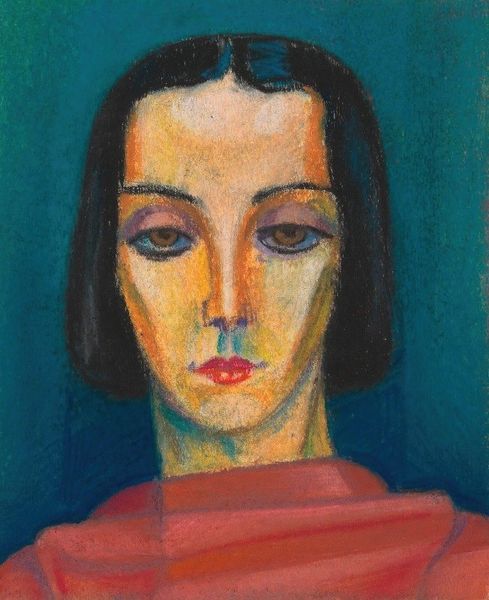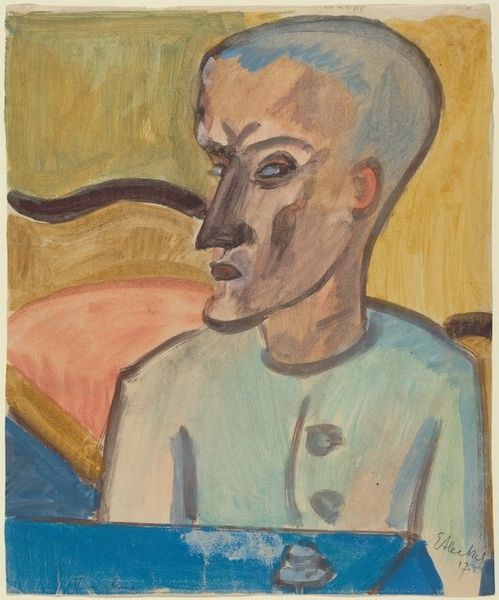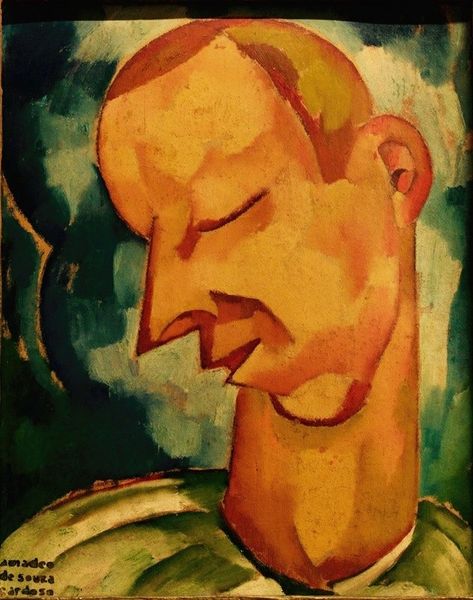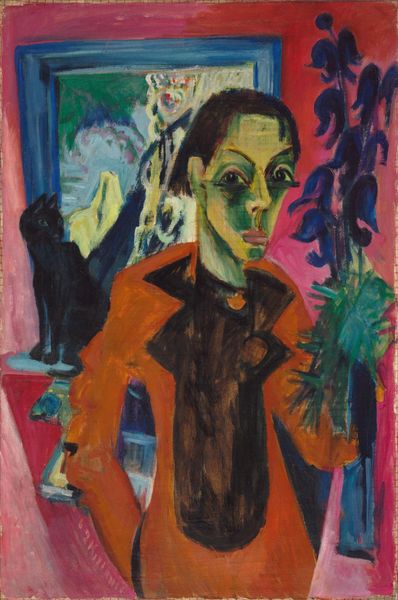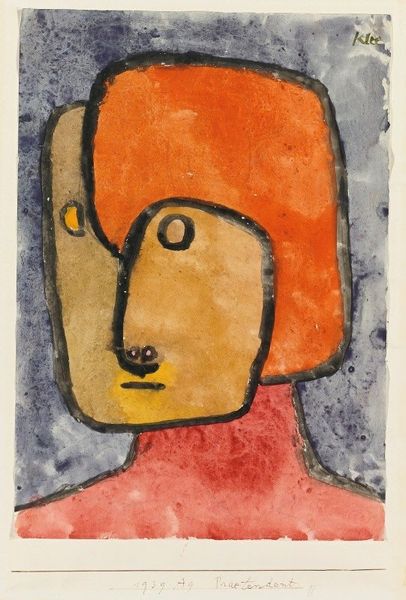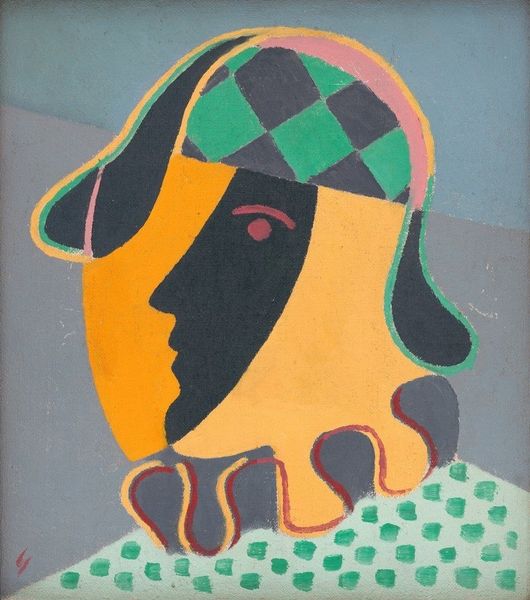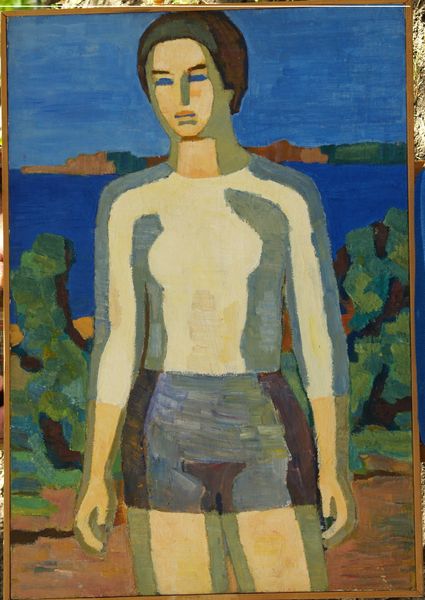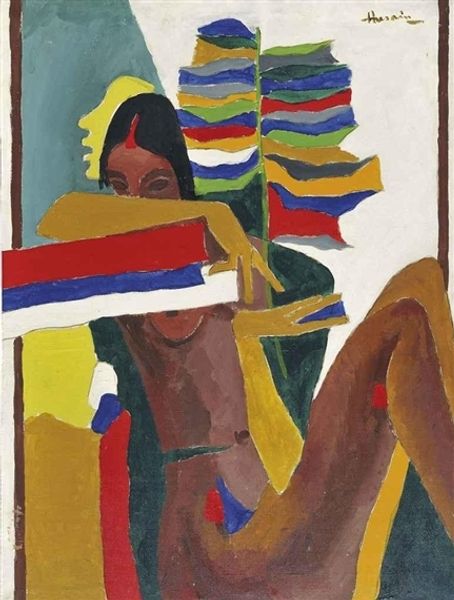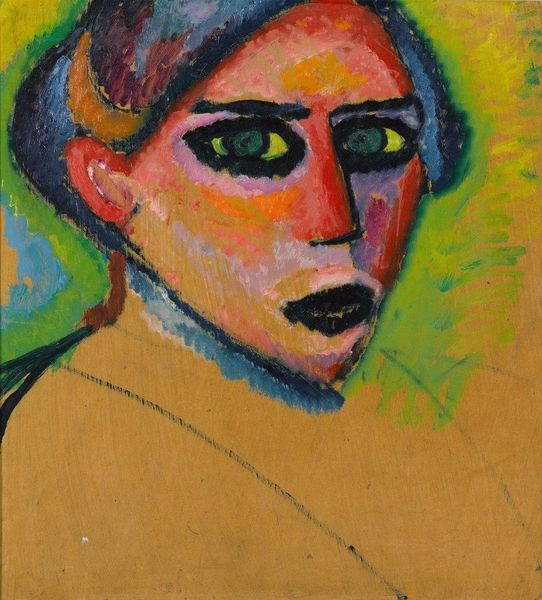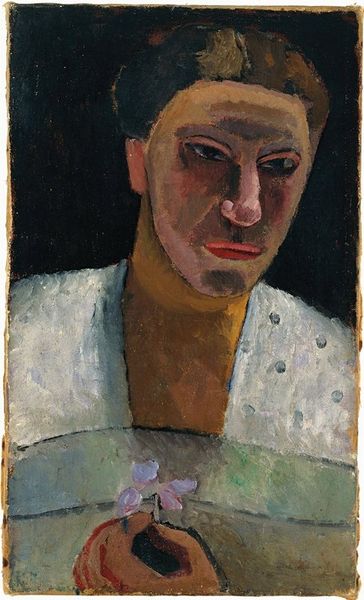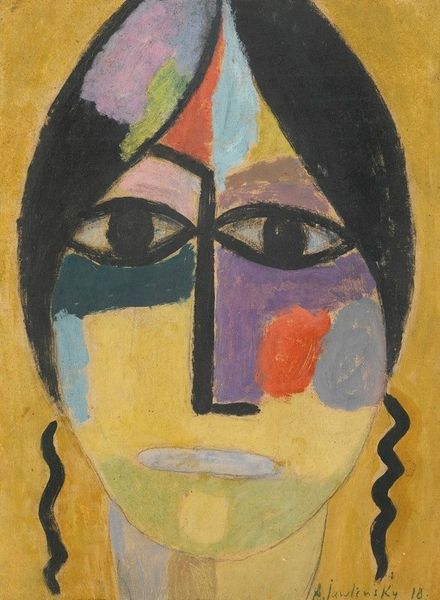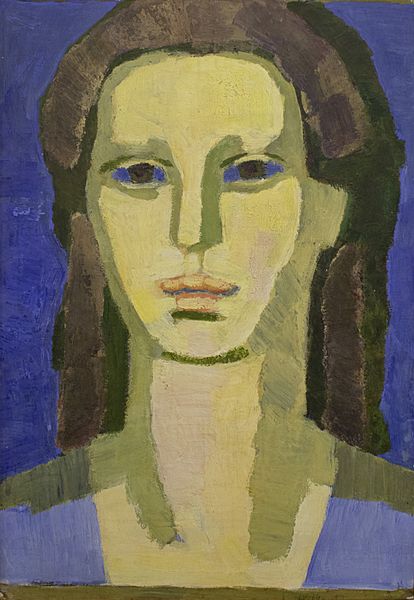
Copyright: Public Domain: Artvee
Curator: Karl Wiener's "Karfreitag," painted in 1943 using oil paints, presents a compelling study in form and emotion. Editor: Immediately, the colours hit you – the unsettling mix of lurid pinks, dark greens, and startling blues… it feels almost theatrical, in a slightly menacing way. Curator: Indeed. The composition divides rather rigidly into zones. We observe a saturated teal above violet-tinged clouds above a horizontal field, setting a structured stage for the expressive portraiture. Notice the gaze; direct, intense, confronting the viewer. Editor: And there's something about the slightly awkward angles – the shoulders, the tilt of the head. It speaks to a vulnerability, perhaps. Despite the boldness, a sensitivity pierces through. That title, “Karfreitag”–Good Friday–anchors the sense of somber introspection, maybe grief? It invites thoughts on sacrifice. Curator: The term "expressionism" aptly describes the distortion used to convey psychological states. Wiener does not shy away from asymmetry in features and an unrealistic colour palette. What significance, would you say, derives from these bold stylistic departures? Editor: Well, it's not just *seeing*, is it? It's *feeling* seen. I get the sense the figure stares out – she’s not just looked at; the viewer gets implicated. Wiener makes choices – maybe it's a confrontation with his interior state projected? I keep seeing flashes of Francis Bacon’s anguished faces there somehow, though less violently rendered. Curator: Intriguing… though Wiener predates some of Bacon’s key explorations of visceral representation, but I concur about that potent link with emotion. It highlights, ultimately, that even amidst stylistic and formal constructs, personal sentiment can exert formidable impact. Editor: Agreed. There's more than meets the eye in the brushstrokes, something deeply personal encoded here.
Comments
No comments
Be the first to comment and join the conversation on the ultimate creative platform.
